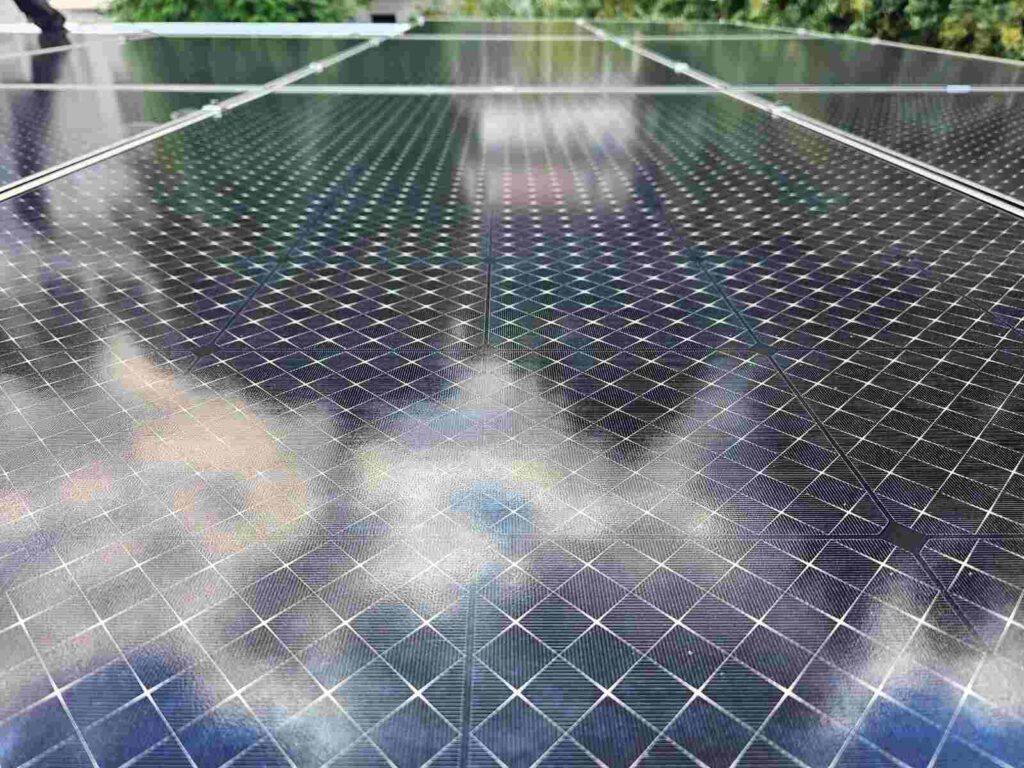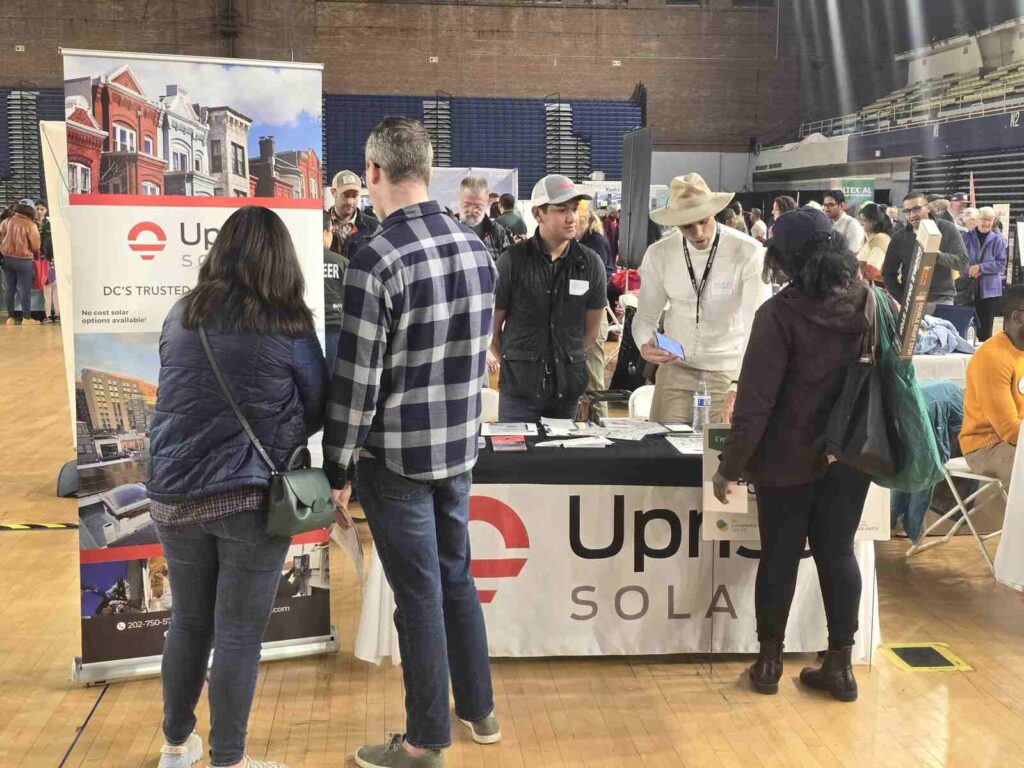Washington, DC is a great location for a solar installation. Boasting an environmentally conscious populace staying educated on new and greener energy options, and with more than 200 average annual days of sunshine, it’s not uncommon to see solar on a home or business in the District. But the solar industry is always changing, and promising solar innovations have the potential to make clean energy even more affordable and effective in the future.
Technology isn’t the only thing that’s changing in solar energy. As more communities make the transition to a greener, cleaner future, they’re incorporating their own innovative programs and initiatives as well. We’re excited about these advances — both in tech and in communities!

Technological Advances
Solar energy is a consistently evolving field, and scientists and installers are working hard to improve functionality, reduce wear and tear, and decrease the amount of energy lost when sunlight reaches solar panels. While we love to get excited about what’s on the horizon for solar, it’s good to note that many of the advances below are still being tested in laboratories, or are too expensive for mainstream commercial use (for now!). Plus, the basic technology behind residential solar panels available today is tried and true tech that’s been used for decades. Several of the advances below are peripheral, like new materials or better manufacturing processes.
That said, some promising options in the pipeline include:
Perovskites
Current solar panels are made with silicon, which achieves an efficiency of about 20% to 22% depending on makeup. However, scientists are learning that when silicon is paired with another material called perovskite, panels can achieve closer to 33% efficiency. More efficiency means homeowners would get to convert more sunlight into energy.
Thin Film Solar
For some DC residents and businesses, space is limited, and the biggest challenge with solar is where to install an array. Developments in thin film solar could solve this problem by decreasing the size of a solar panel into a material that can be applied like a film. This may potentially allow surfaces like windows to transform into energy generation units!
Nanowires
While the name “hairy solar” may not be very appealing, it describes an exciting innovation in the way solar panels could harvest energy. Studies are discovering that nanowires placed on a fabric made of carbon nanotubes might be even better than silicon at converting sunlight into energy. This setup makes panels look fluffy or hairy, but they perform better than silicon in many tests.
Vanadium
Right now, solar panels are only collecting sunlight from the visible spectrum, or light we can see. However, humans are incapable of seeing about 0.0035 percent of all light, which means a lot of opportunity is being lost by harvesting only visible radiation. By considering new materials, such as vanadium and titanium, scientists are working to harvest more of the light spectrum.
Microinverters
Here’s one technological advance ready to go today! Solar arrays of the past drew on string inverters to convert sunlight into power usable for a home. However, when a system utilizes a string inverter, a malfunction on one panel could knock out the entire array. Microinverters, by contrast, attach each individual panel, so if one panel goes down, the rest keep working. At Uprise, we consider string inverters part of solar history, and use microinverters in each of our installs today.
Better Batteries
Many buildings rely on banking clean energy during the day to use at night to avoid pulling from the grid. Thanks to recent innovations, batteries are lasting longer and storing energy more effectively. Uprise Solar installs FranklinWH batteries, which are safer because they use lithium iron phosphate batteries, which don’t contain volatile compounds like cobalt.

Community Innovations
In addition to technological advances, DMV residents can benefit from innovative local initiatives.
Solar PPAs
A power purchase agreement, or PPA, allows homeowners to acquire a solar system with no upfront cost. Instead, Uprise covers the installation, and you pay Uprise for the power you use. After 20 years, you own the panels. In the meantime, we’ll conducts maintenance so you don’t have to!
Net Metering
If your solar array produces more power than your home needs, you can send it back to the grid and receive credits on your power bill through net metering. Pepco, BGE, and Dominion all have net metering programs.
Tax Credits and SRECs
Both federal and local tax advantages and rebates can reduce the cost to install a solar array. And SRECs, or Solar Renewable Energy Credits, are worth money every time your array produces one megawatt-hour of clean energy. In DC, SRECs are usually worth around $400.
Enjoy Clean Power and Help the Environment
If you’re considering solar as a way to go green, benefit your community, reduce your energy bills, and reduce grid reliance, now is a great time to make the change. Thanks to community-wide and technological innovations, solar power is more viable than ever.
The experts at Uprise will create a customized solar strategy for you, equipped with leading technologies like microinverters, to ensure reliable and efficient service for your property. We select technologies and equipment that will deliver high value to our customers for years to come. Contact Uprise to schedule a virtual or in-person appointment today.
